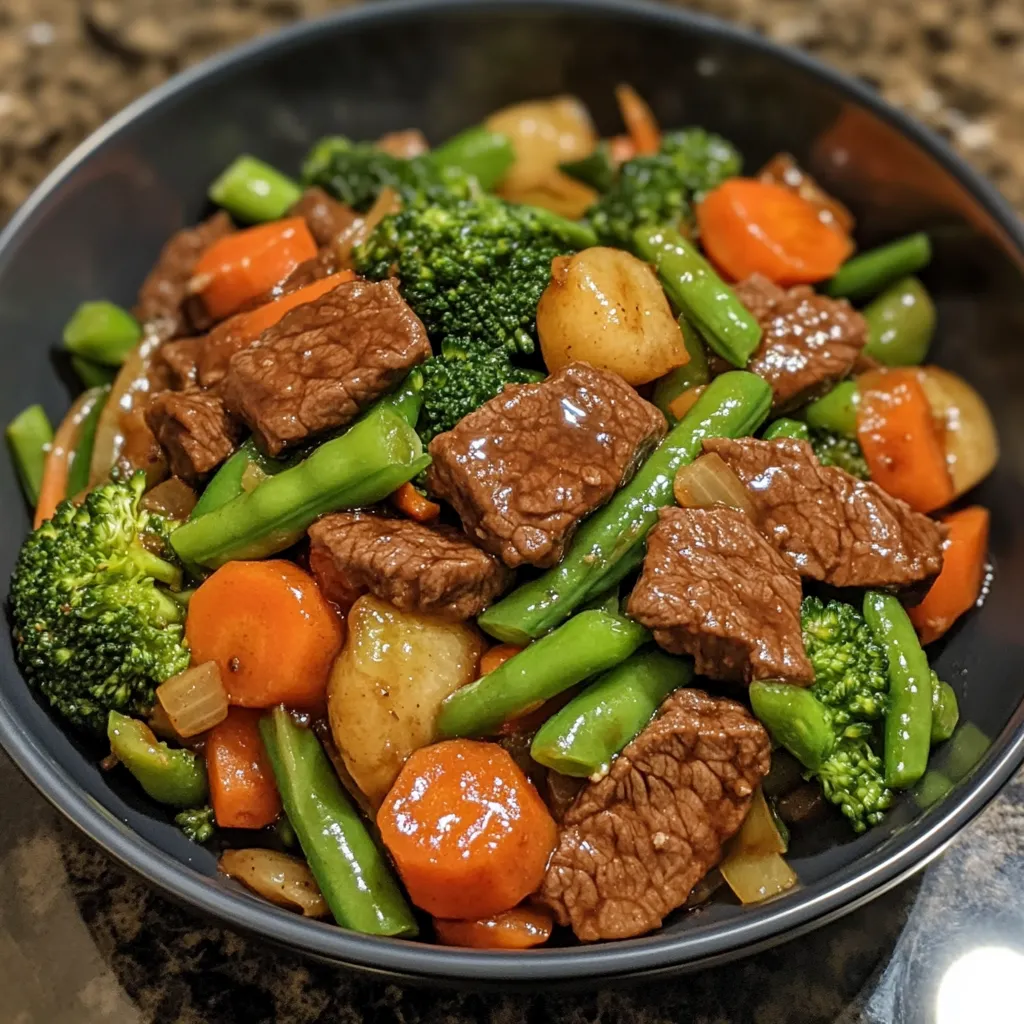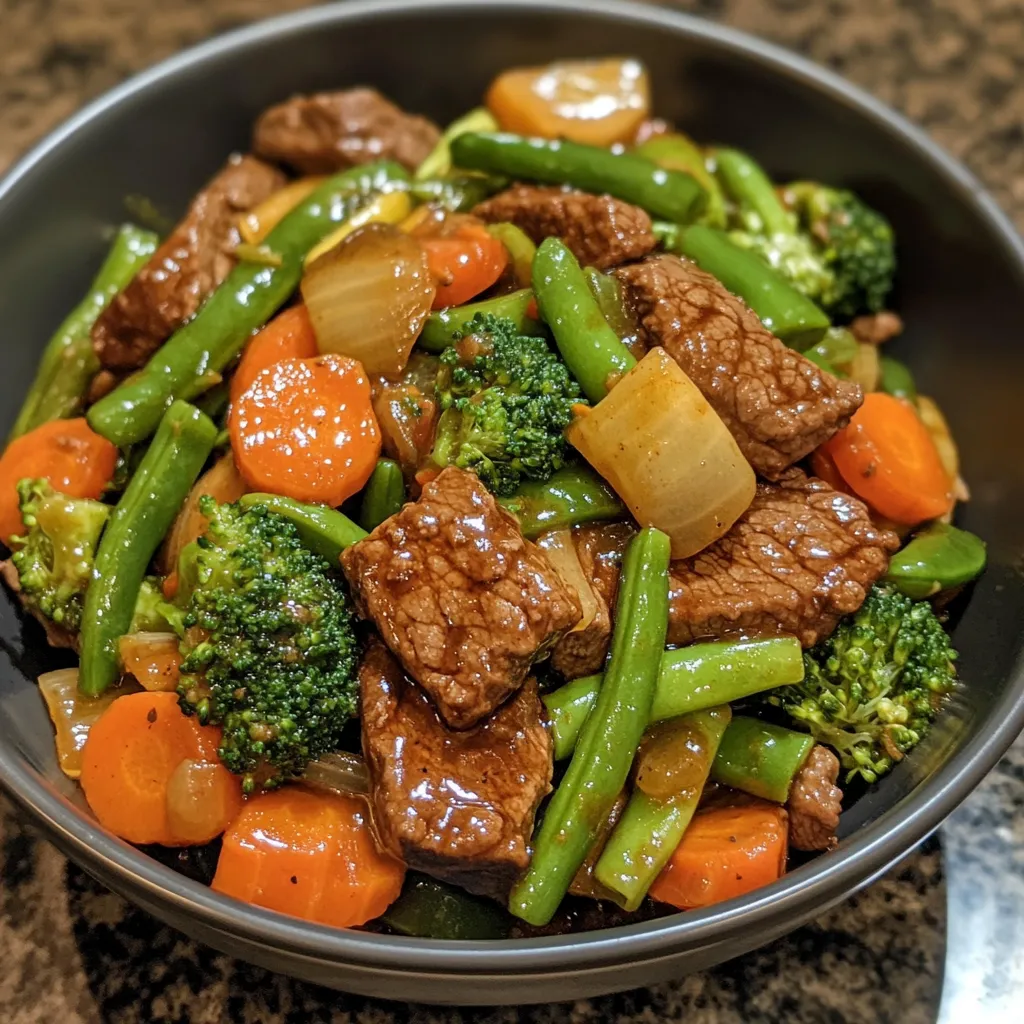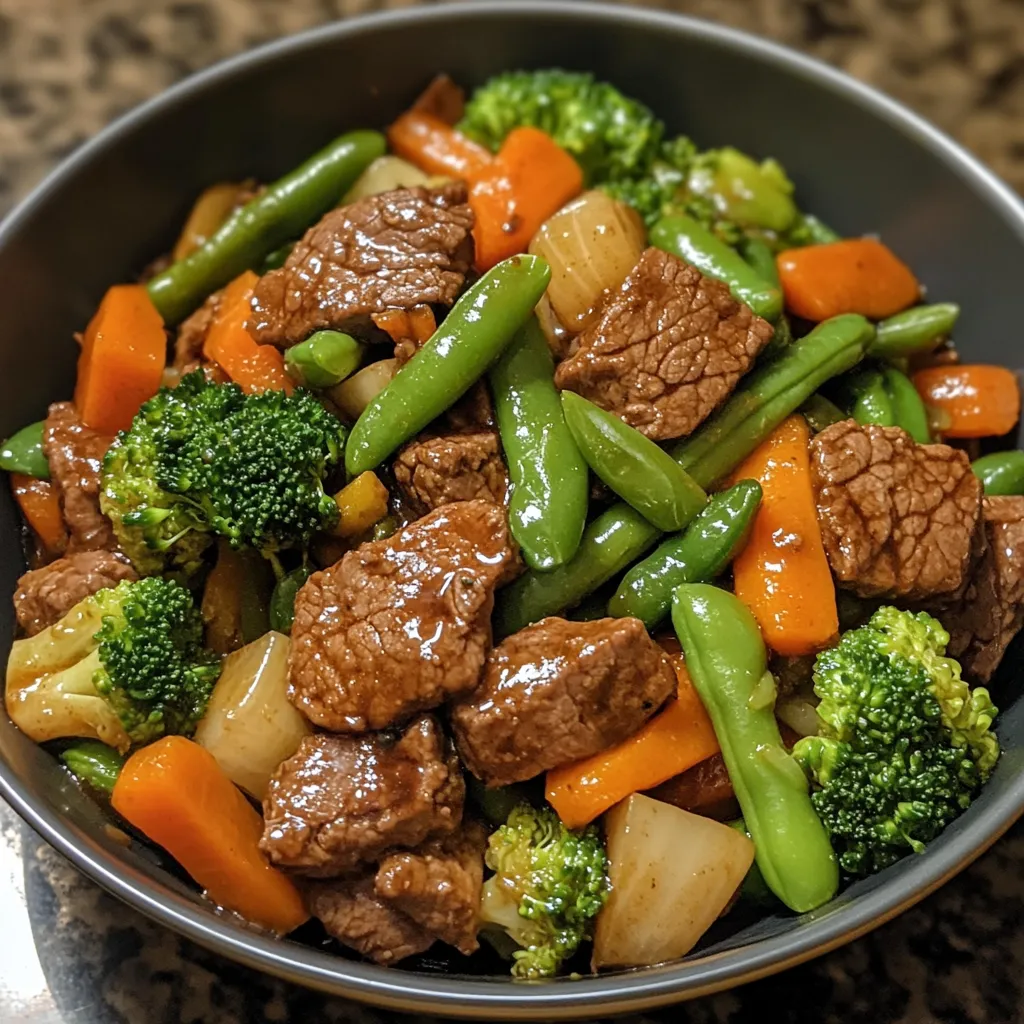 Pin it
Pin it
The sizzle of thinly sliced beef hitting my hot wok creates an unmistakable symphony that signals dinner magic is underway. After years of ordering takeout, I discovered that homemade stir-fry delivers flavors so vibrant and textures so perfect that restaurant versions pale in comparison. What makes this recipe special isn't just the tender beef or the rainbow of vegetables, but how it transforms simple ingredients through high-heat cooking and a carefully balanced sauce. In less than 30 minutes, this dish brings restaurant-quality Asian cuisine to your table while letting you control exactly what goes into every bite.
Last month, my teenage son brought three friends home unexpectedly at dinnertime. With this stir-fry, I was able to quickly feed a table of hungry boys who devoured every bite and asked if I'd learned to cook 'professionally in Asia.' Little did they know it's simply about technique and timing!
Essential Elements
- Beef Sirloin: Tender with perfect marbling for stir-fry
- Fresh Vegetables: The more colorful the better
- Cornstarch: The secret to velvety meat texture
- High-Heat Oil: Allows proper searing without smoking
- Aromatics: Fresh garlic and ginger create the foundation
- Balanced Sauce: The perfect blend of salty, sweet, and umami
5 Reasons This Stir-Fry Beats Takeout
After comparing countless restaurant stir-fries to my homemade version, the differences are striking. Restaurant versions often swim in excess oil, rely on MSG for flavor, and feature vegetables cooked to submission. This homemade version maintains vibrant vegetable crunch, uses significantly less oil, and relies on fresh ingredients for clean flavor. You'll also save money - this entire recipe costs about the same as a single takeout order while serving an entire family. Perhaps most importantly, you control the quality of every ingredient, from selecting the perfect cut of beef to using locally grown vegetables at peak freshness. The result is a healthier, more vibrant dish that actually tastes more authentic than most restaurant versions.
Creating Stir-Fry Magic
- Perfect Your Preparation:
- Slice beef against the grain into thin, even strips. Cut vegetables into uniform pieces for even cooking. Mix sauce ingredients before you begin cooking. Arrange everything within arm's reach of your cooking area. Have serving plates ready before you start cooking.
- Master the Beef Technique:
- Toss beef with cornstarch for that signature texture. Use a truly hot pan - you should see slight smoke. Cook beef in a single layer, not piled up. Allow it to sear without stirring too frequently. Remove beef when just barely cooked through.
- Sequence Your Vegetables:
- Start with aromatics - garlic and ginger. Add denser vegetables first (carrots, broccoli). Introduce softer vegetables later (zucchini, peppers). Keep everything moving in the pan constantly. Maintain high heat throughout the process.
- Create the Perfect Finish:
- Return beef to pan at the last minute. Add sauce and toss quickly to coat. Allow sauce to thicken just until glossy. Finish with fresh elements like green onions. Serve immediately while piping hot.
 Pin it
Pin it
Storage Solutions
While this stir-fry is best enjoyed immediately after cooking, it does make excellent leftovers with proper storage. After cooling completely, transfer to airtight containers and refrigerate for up to three days. The flavors actually develop overnight, though the vegetables will soften somewhat. For reheating, a quick toss in a hot skillet is ideal - it revives the textures better than microwave heating, which can make the beef tough. If you do use a microwave, heat at 70% power with a damp paper towel covering the dish to maintain moisture. For meal prep purposes, you can also prepare all components separately and refrigerate, then assemble and cook just before serving for the freshest results.
Perfect Pairings
While delicious on its own, thoughtful accompaniments elevate this stir-fry into a complete dining experience. Steamed jasmine rice is the classic choice, perfect for soaking up the savory sauce. For a lower-carb option, cauliflower rice works beautifully without sacrificing the experience. Thin rice noodles or chow mein also make excellent bases. For appetizers, simple vegetable spring rolls or a light miso soup create a restaurant-quality meal progression. A cold Asian cucumber salad provides refreshing contrast to the warm, rich stir-fry. For beverages, a light Japanese beer, a crisp Riesling, or simply hot tea complements the flavors without overwhelming them.
Troubleshooting Tips
Even experienced cooks occasionally encounter challenges with stir-fry. If your beef turns out tough, it was likely overcooked or sliced with the grain instead of against it - next time, watch cooking time carefully and ensure proper cutting technique. For sauce that's too thin, create a quick slurry with 1 teaspoon cornstarch and 1 tablespoon cold water, then stir into the hot dish. If too thick, add a splash of beef broth or water. Should your vegetables release too much water, they were likely overcrowded in the pan - cook in smaller batches with higher heat. And if the dish lacks flavor, a splash of fish sauce or an extra drizzle of sesame oil just before serving can enhance the umami profile remarkably.
 Pin it
Pin it
Conclusion
Beef Stir-Fry with Vegetables represents the perfect harmony of flavor, nutrition, and convenience in home cooking. It transforms everyday ingredients into something extraordinary through technique rather than complicated components or processes. Whether you're feeding a hungry family on a busy weeknight, looking to expand your culinary repertoire, or simply craving fresh flavors without restaurant prices, this recipe delivers satisfaction on all fronts. As you master the rhythm of stir-frying, you'll find yourself returning to this versatile cooking method again and again, creating endless variations with whatever ingredients you have on hand - the true mark of a recipe worth keeping.
Frequently Asked Questions
- → Can I use a different type of meat?
- Absolutely! Chicken, shrimp, or even tofu can be used instead of beef. Just adjust the cooking time accordingly—chicken will need about 4-5 minutes to cook through, shrimp only 1-2 minutes per side, and tofu about 2-3 minutes per side to get golden.
- → What's the best cut of beef for stir-fry?
- Flank steak, sirloin, or ribeye are ideal for stir-fries because they're tender and cook quickly. The key is to slice the meat very thin against the grain, which helps it stay tender even with brief cooking.
- → How do I store leftovers?
- Store leftover stir-fry in an airtight container in the refrigerator for up to 3 days. Reheat in a pan over medium heat or in the microwave. Add a splash of water or broth when reheating to keep the dish from drying out.
- → Can I make this recipe gluten-free?
- Yes! Use tamari or coconut aminos instead of soy sauce, and make sure your oyster sauce is gluten-free (or substitute with a gluten-free hoisin sauce). Also check that your cornstarch is processed in a gluten-free facility.
- → What can I serve with this dish?
- This beef stir-fry pairs wonderfully with steamed jasmine rice, brown rice, or noodles like lo mein or rice noodles. For a low-carb option, try serving it over cauliflower rice or with a side of steamed edamame.
- → Can I prep anything ahead of time?
- Yes! Slice the beef and vegetables up to 24 hours ahead and store them separately in the refrigerator. You can also mix the sauce ingredients ahead of time and refrigerate. This turns the cooking process into a quick 10-minute affair when you're ready to eat.
